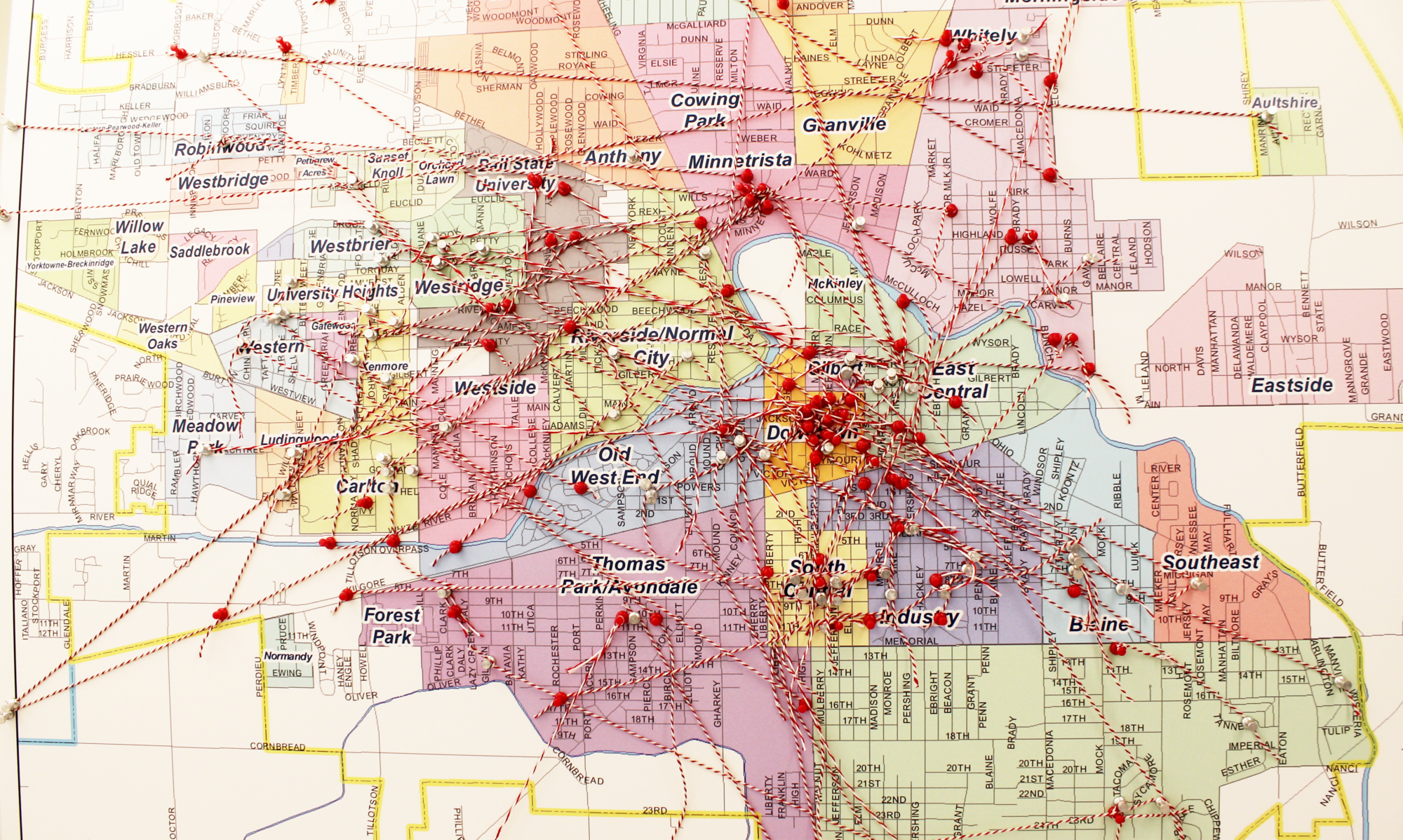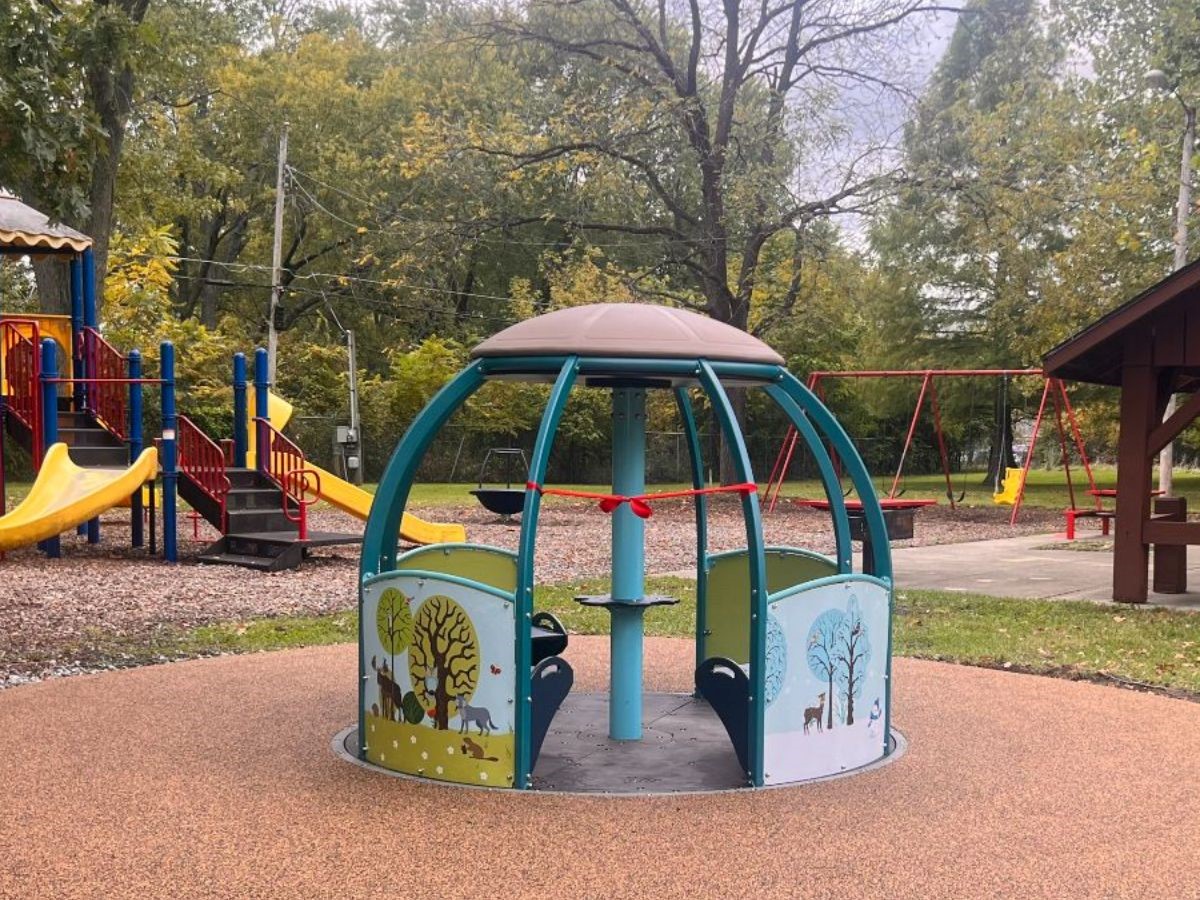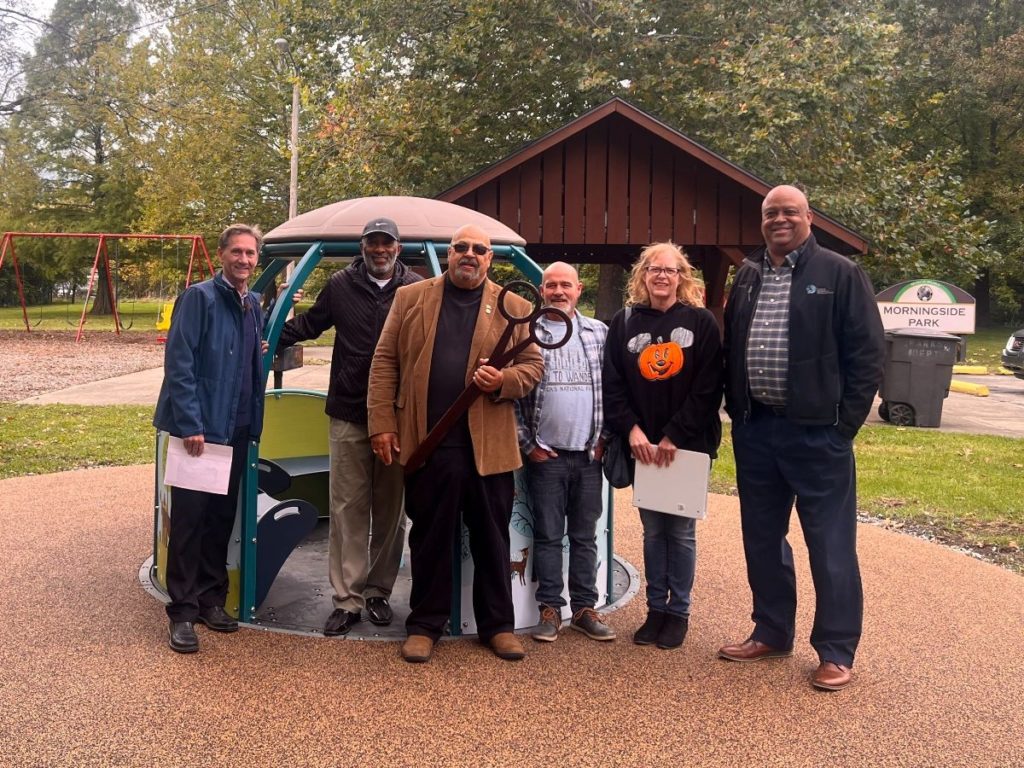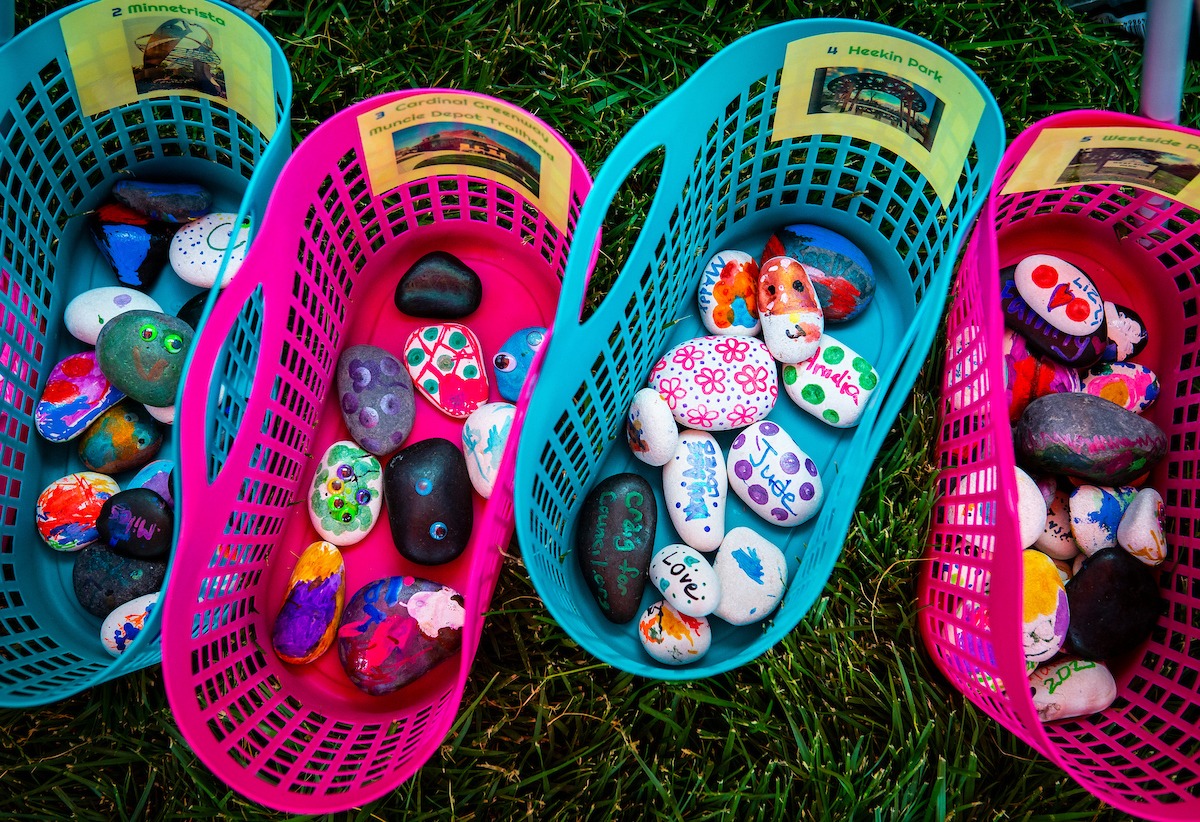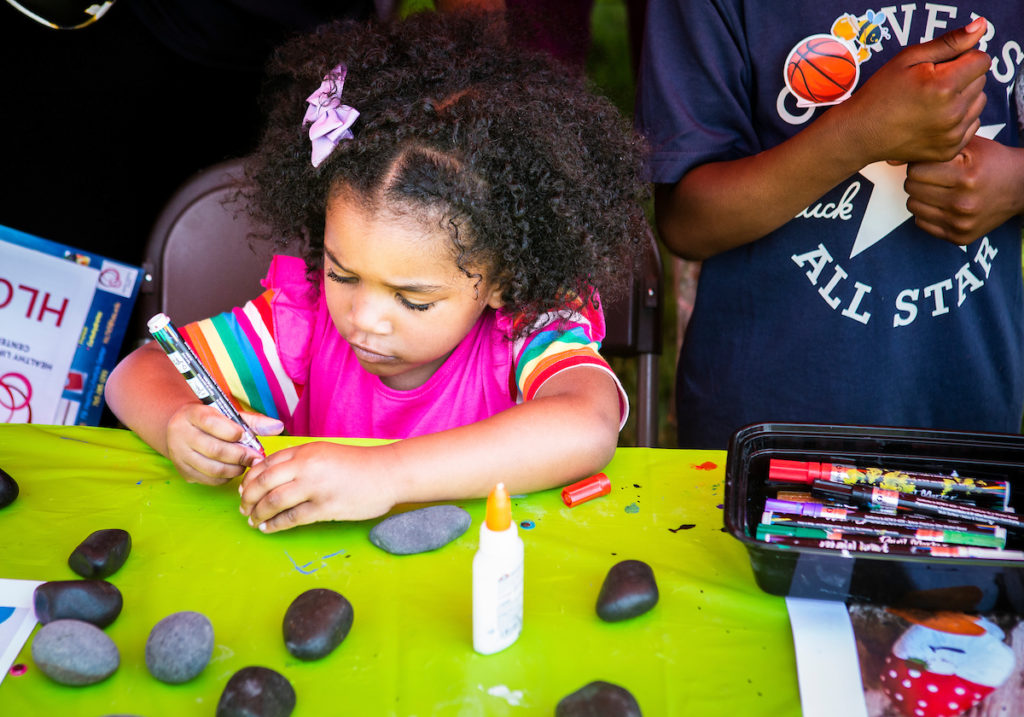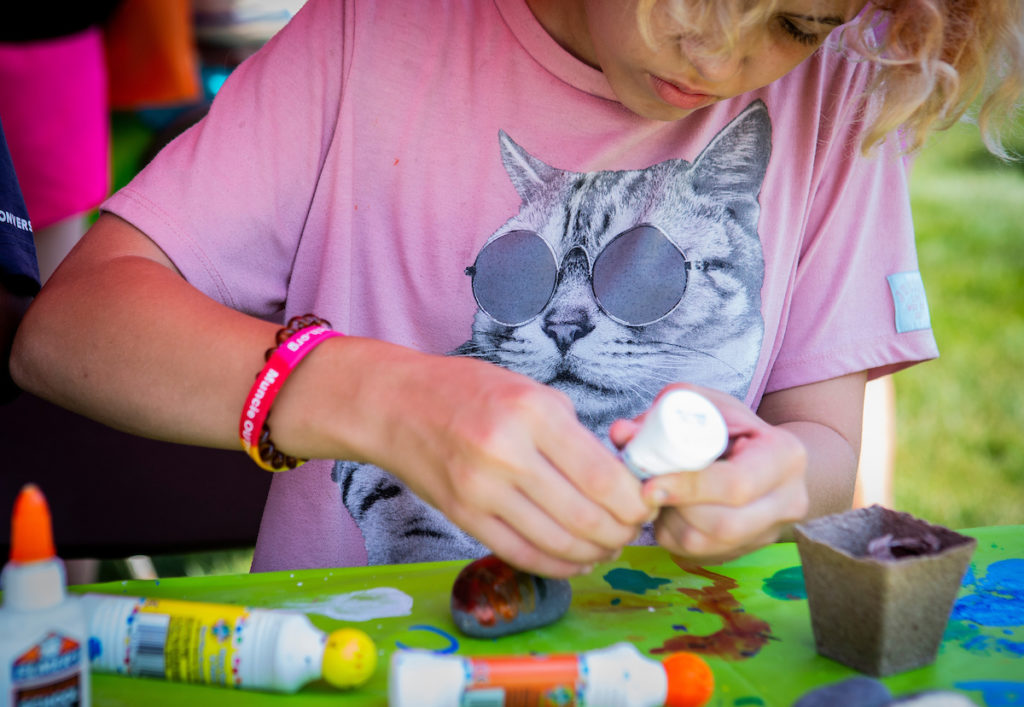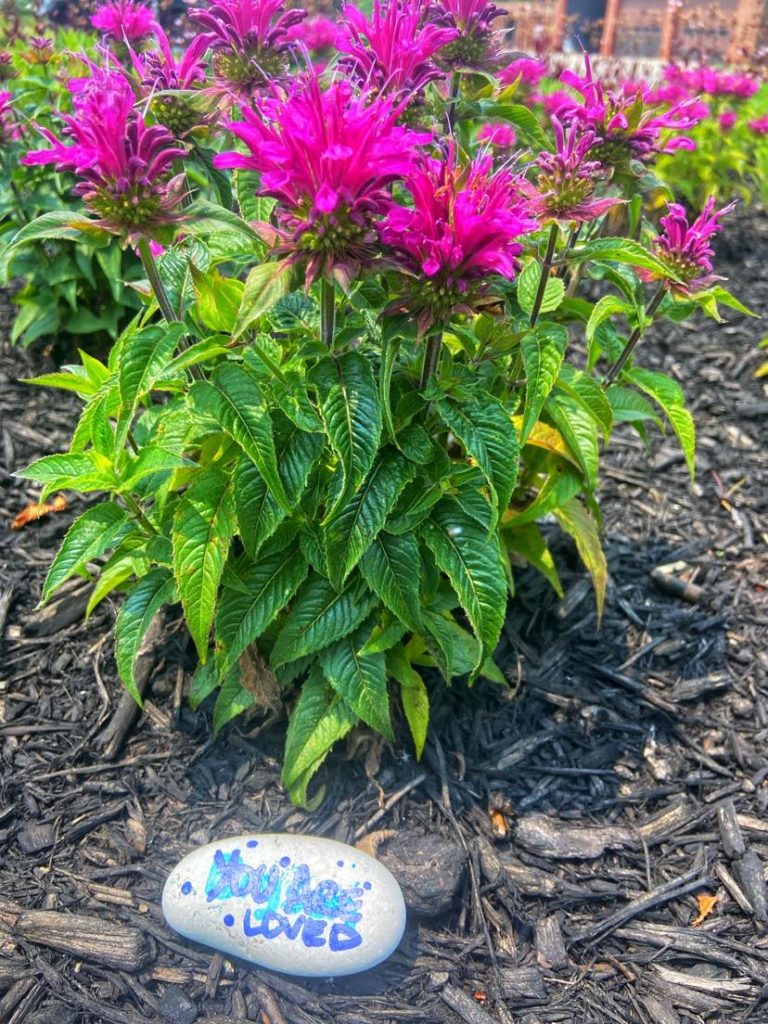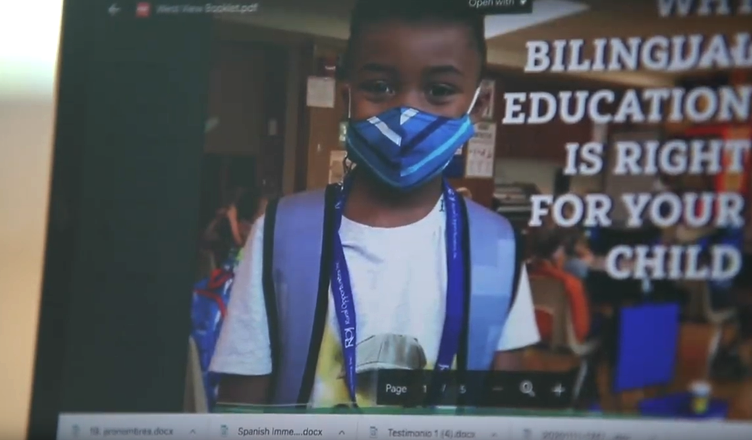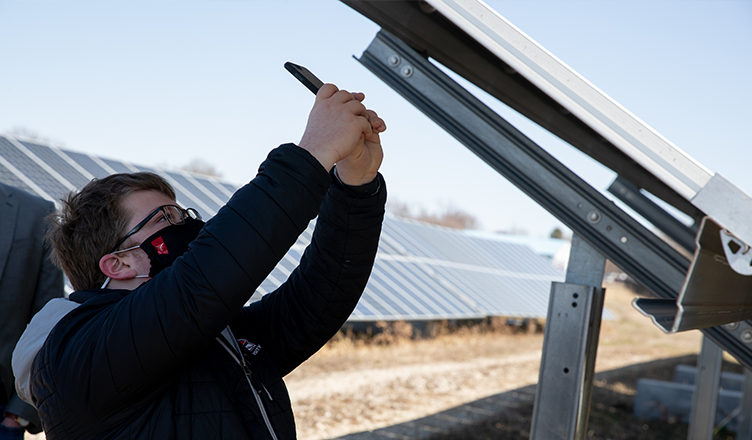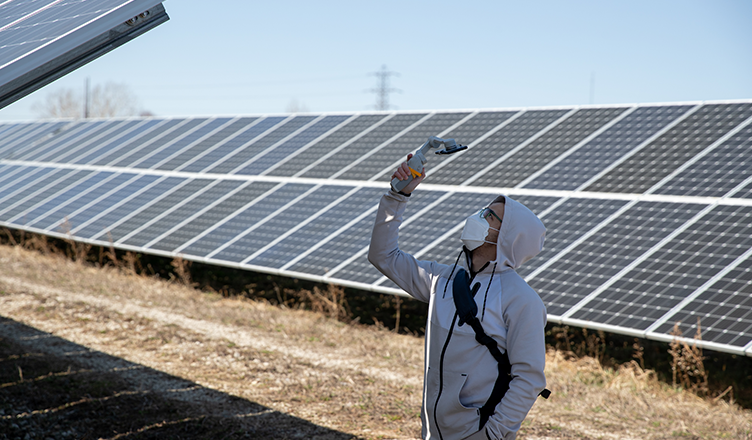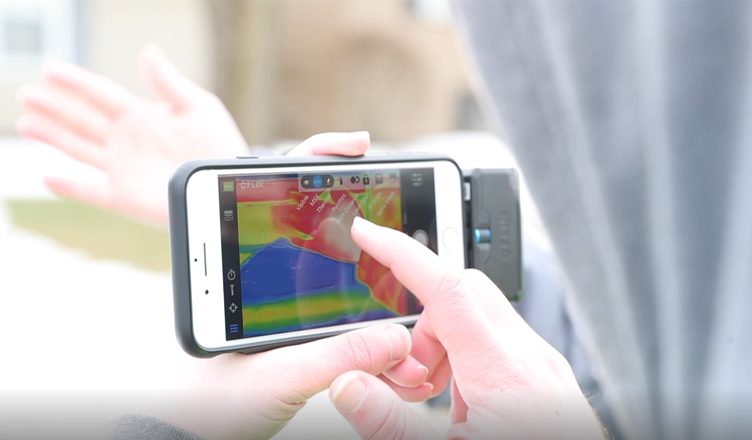In an enchanting display of community spirit and dedication to inclusivity, the Morningside Neighborhood Association, in collaboration with Muncie Parks and Recreation, proudly unveiled the newest addition to Morningside Park – the We-Go-Round. This vibrant carousel of joy was brought to life thanks in part to the financing from ARP funds, showcasing a community’s commitment to creating shared spaces that celebrate the diversity of abilities.
The We-Go-Round, installed by Landscape Structures, is more than just a playground piece; it’s a revolutionary design that invites children of all abilities to whirl in unison. With strategic seating areas and plenty of space, the structure welcomes wheelchairs, even those without wheel-locking mechanisms, ensuring no child is left on the sidelines.
The ribbon was cut on Monday, October 16th, 2023, with Mayor Ridenour, Deputy Mayor Ivy, Superintendent Malone, Park Staff, Neighborhood Association members, and the Muncie Police Department in attendance. The We-Go-Round, with its shade-providing rooftop and central handhold, promises to be the hub of laughter and shared experiences.
We extend our heartfelt thanks to everyone involved in making this dream a reality. Come visit, see the joy in motion, and let your hearts spin with delight at Morningside Park.
